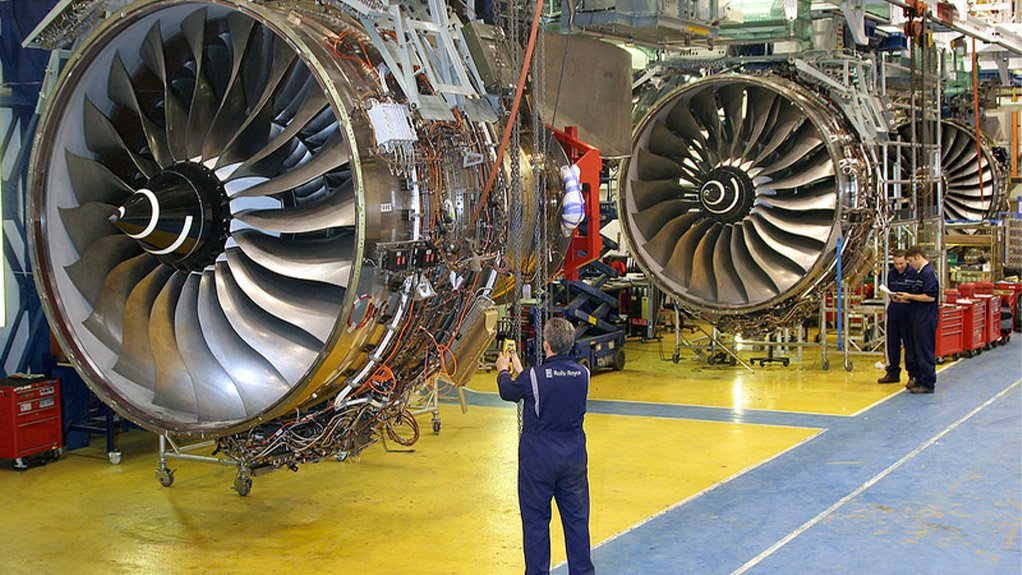
Rolls-Royce Sells Entire UK Pension Fund for £4.3 Billion to Clear Path for Aerospace Growth Push
The £4.3 Billion Chess Move: How Rolls-Royce Weaponized Perfect Market Timing
LONDON — In the boardrooms of Britain's industrial giants, a quiet revolution has been unfolding. When Rolls-Royce Holdings announced its £4.3 billion pension fund sale to Pension Insurance Corporation on Sunday, it wasn't merely offloading liability—it was executing a masterclass in financial engineering that could reshape how corporations manage legacy obligations.

The transaction, covering 36,000 current and former employees, represents the largest UK pension risk transfer of 2025 and signals a fundamental shift in corporate capital allocation strategy. For CEO Tufan Erginbilgic, who has orchestrated an extraordinary 90% share price surge this year, the deal removes the final major obstacle to Rolls-Royce's transformation from a debt-laden conglomerate into a focused aerospace powerhouse.
But beneath the surface lies a more compelling narrative: the convergence of favorable interest rates, institutional appetite, and strategic opportunism that enabled Rolls-Royce to execute what industry analysts describe as a near-perfect market timing play.
When the Stars Align: The Perfect Storm of Market Conditions
The mathematics behind this transaction reveal why Rolls-Royce moved now rather than waiting. With UK interest rates elevated through 2024 and 2025, the present value of pension liabilities has compressed significantly, making buyouts substantially more affordable than during the low-rate environment of 2020-2021.
UK interest rates from 2020 to 2025, showing the recent elevated environment.
| Date of Change | Bank Rate |
|---|---|
| 7 August 2025 | 4.00% |
| 8 May 2025 | 4.25% |
| 6 February 2025 | 4.50% |
| 7 November 2024 | 4.75% |
| 1 August 2024 | 5.00% |
| 3 August 2023 | 5.25% |
| 22 June 2023 | 5.00% |
| 11 May 2023 | 4.50% |
| 23 March 2023 | 4.25% |
| 2 February 2023 | 4.00% |
| 15 December 2022 | 3.50% |
| 3 November 2022 | 3.00% |
| 22 September 2022 | 2.25% |
| 4 August 2022 | 1.75% |
| 16 June 2022 | 1.25% |
| 5 May 2022 | 1.00% |
| 17 March 2022 | 0.75% |
| 3 February 2022 | 0.50% |
| 16 December 2021 | 0.25% |
| 19 March 2020 | 0.10% |
| 11 March 2020 | 0.25% |
Higher interest rates generally decrease pension liabilities, while lower rates increase them. This inverse relationship occurs because liabilities are calculated as the present value of future benefit payments, and a higher interest rate (used as the discount rate) reduces the amount of money needed today to fund those future promises.
Market specialists suggest the deal pricing benefited from intense competition among insurers, with Pension Insurance Corporation—itself being acquired by Athora for £5.7 billion—likely offering aggressive terms to secure a marquee transaction. The UK bulk annuity market has expanded dramatically, with projections pointing toward £500 billion in total deals by 2033.
The scheme's robust funding position—£4.74 billion in assets against £3.96 billion in obligations as of 2024—provided additional negotiating leverage. Unlike distressed pension sales, Rolls-Royce approached the market from a position of strength, enabling optimal pricing discovery.
"The confluence of rate environment, insurer capacity, and scheme funding created a window that may not reopen for years," noted one pension advisory specialist who requested anonymity due to client relationships.
Beyond Balance Sheet Engineering: The Strategic Architecture
While headlines focus on liability removal, the transaction's true significance lies in its acceleration of Rolls-Royce's strategic pivot. The company has systematically shed non-core assets and pension obligations while doubling down on next-generation aerospace technologies, including hybrid and hydrogen propulsion systems.

The pension sale complements previous streamlining efforts, including the 2019 de-risking transaction with Legal & General and ongoing operational restructuring. With investment-grade credit ratings recently restored—Fitch assigned BBB+ and S&P provided BBB ratings—Rolls-Royce has created substantial financial flexibility for growth investments.
The timing proves particularly astute given surging demand for commercial aerospace engines. Widebody aircraft utilization has rebounded strongly, driving aftermarket services revenue that represents Rolls-Royce's highest-margin business segment. Removing pension volatility from the balance sheet allows management to pursue aggressive expansion in this lucrative segment without regulatory constraints.
The Institutional Chess Game: Reading the Insurer Playbook
Pension Insurance Corporation's aggressive pursuit of this mandate reflects broader institutional dynamics reshaping the UK retirement landscape. With PIC operating under Athora's pending acquisition, the insurer requires high-quality assets to support its matching-adjustment portfolio strategy.
Growth of the UK bulk annuity market by volume over the past decade.
| Year | Volume (£ billion) |
|---|---|
| 2023 | 49.1 |
| 2022 | 25-30 |
| 2021 | 30 |
The regulatory environment has become increasingly favorable for these transactions, with UK authorities actively encouraging pension risk transfers to specialist insurers. This policy stance reflects recognition that corporate sponsors often lack the expertise and capital efficiency to manage complex longevity and investment risks optimally.
However, the concentration of pension liabilities among a handful of insurers creates potential systemic concerns. If economic shocks impair insurer solvency, the ripple effects could affect hundreds of thousands of pensioners. Market participants emphasize that regulatory oversight and capital requirements provide safeguards, but concentration risk remains an emerging policy consideration.
Capital Deployment Calculus: Where the Money Flows Next
The pension sale fundamentally alters Rolls-Royce's capital allocation options. With £4.3 billion in liabilities eliminated and net cash position approaching £1.1 billion by mid-2025, the company possesses unprecedented financial flexibility since its 2020 near-bankruptcy.
Management has signaled intentions to accelerate research and development spending, particularly in sustainable aviation technologies. The aerospace industry faces mounting pressure to reduce carbon emissions, creating substantial opportunities for companies developing hydrogen and hybrid propulsion systems. Rolls-Royce's early investments in these technologies could generate significant competitive advantages as regulatory requirements tighten.
The company has also launched a £1 billion share buyback program, reflecting confidence in cash generation capabilities. Industry observers expect continued capital returns as engine aftermarket revenues grow, supported by recovering international travel demand and aging fleet replacement cycles.
Reading the Market Signals: Investment Implications and Sector Dynamics
The transaction's completion removes a significant overhang that had constrained Rolls-Royce's equity valuation. European industrial companies with substantial pension obligations traditionally trade at discounts to peers due to liability volatility and capital inefficiency concerns.
Rolls-Royce (RR.L) share price performance over the past year, highlighting the significant surge mentioned in the article.
| Date | Closing Price (GBX) |
|---|---|
| August 8, 2025 | 1,071.50 |
| August 6, 2025 | 1,077.00 |
| August 5, 2025 | 1,109.50 |
Market analysts anticipate multiple expansion as the equity story simplifies and cash flow predictability improves. The company's focus on high-margin aftermarket services and technology leadership in sustainable aviation positions it favorably for long-term growth.
For the broader UK market, the deal validates the pension risk transfer model and likely accelerates similar transactions among FTSE companies. BAE Systems, GKN, and other industrial firms with well-funded schemes may pursue comparable strategies while market conditions remain favorable.
Investment professionals highlight that successful pension buyouts require careful timing and strong scheme funding. Companies with underfunded plans face significantly higher transaction costs and may need to wait for market conditions to improve.
The Ripple Effect: Reshaping Corporate Britain's Retirement Landscape
Beyond immediate financial benefits, the transaction represents a cultural shift in corporate responsibility models. Traditional defined benefit pensions symbolized long-term employment relationships and corporate paternalism. Their systematic transfer to specialist insurers reflects broader evolution toward more transactional employment structures.
A Defined Benefit (DB) pension guarantees a specific, predictable income in retirement, with the financial risk falling on the employer. In contrast, a Defined Contribution (DC) plan's final payout depends on contributions and investment performance, placing the risk on the employee. This transfer of risk is why many companies have moved away from traditional DB plans.
This transformation carries both opportunities and risks. While companies gain operational flexibility and capital efficiency, employees lose direct connection to their former employers' financial performance. The psychological impact of this disconnection remains underexplored but could influence talent retention and corporate culture development.
The trend also concentrates significant economic power among pension insurers, potentially reducing competitive dynamics in UK retirement provision. Regulatory authorities must balance encouraging efficient risk transfer with maintaining adequate market competition and consumer protection.
Looking Forward: The New Corporate Calculus
Rolls-Royce's pension sale establishes a template for strategic liability management that extends beyond aerospace manufacturing. The combination of favorable market timing, robust scheme funding, and clear strategic objectives created optimal conditions for value creation.
As interest rates remain elevated and insurer competition intensifies, similar opportunities may emerge across UK corporate sector. However, successful execution requires sophisticated market analysis, strong financial position, and coherent strategic rationale—elements that distinguish value-creating transactions from mere financial engineering.
The ultimate test of this strategy will emerge over the next 18-24 months as Rolls-Royce deploys its enhanced financial flexibility. Early indicators suggest accelerated investment in sustainable technologies and continued shareholder returns, but execution risk remains significant in the rapidly evolving aerospace sector.
For investors, the transaction removes a key uncertainty while creating new growth options. The challenge lies in evaluating management's capital allocation decisions and competitive positioning in an industry undergoing fundamental technological transformation.
Investment considerations should account for past performance not guaranteeing future results. Readers should consult qualified financial advisors for personalized guidance regarding aerospace sector investments and pension-related securities.